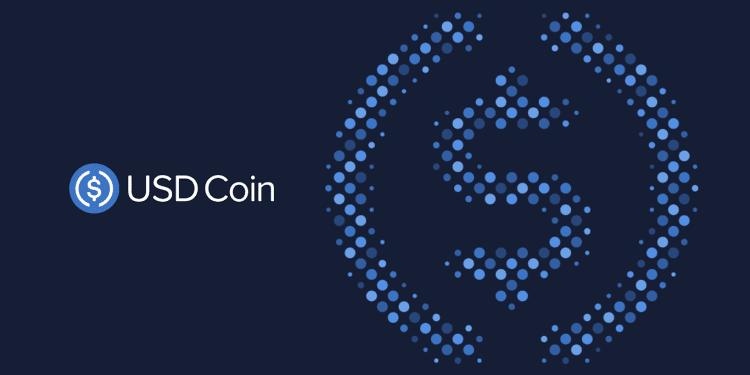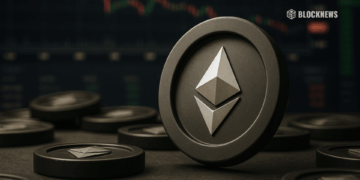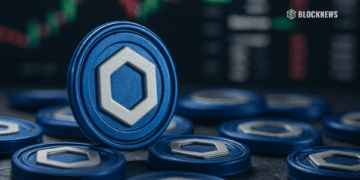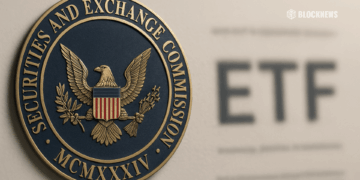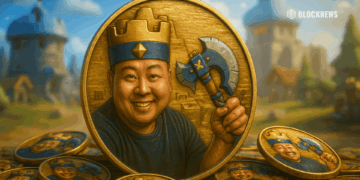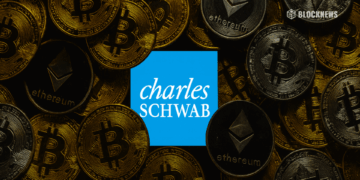Our second article in the top 10 stablecoin series brings us to USDC branded as “the world’s fastest-growing, fully regulated dollar digital stablecoin”. With a market cap of over $53 billion, it is second only to Tether with a marked difference of approximately $20 billion. Launched in 2018, USDC is managed by an independent member-based consortium called Centre, founded in the same year by the cryptocurrency exchange Coinbase and Circle. Circle is a global financial technology firm based in the United States and also USDC’s issuer.
Circle claims to offer financial and operational transparency, regulated within the US with established banking partners and auditors. Like its cousin Tether, USDC is a fiat-backed stablecoin supported on multiple layer 1 blockchains, including Ethereum, Algorand, Solana, Tron, and Stellar. Other fiat currency token additions such as EURC, JPYC, and GBPC are promised to the ecosystem, with the latter offering an impressive number of wallets, exchanges, platforms, apps, and service providers. USDC is the token used to facilitate these payments, trading, lending, and other services.
Just like Tether, USDC is centralized, which is one aspect of fiat-backed currencies that irks proponents of decentralization. Due to its central nature, the consortium has the authority to blacklist addresses, such that their users can no longer send or receive any USDC. This decision can only be considered if one of the two below criteria are met;
- when failing to blacklist would represent a threat to the security, integrity, and reliability of the USDC network,
- when compliance to the law, regulation, or legal order from a US authorized authority, US court of competent jurisdiction, or other authority with jurisdiction over the Centre, is necessary,
Blacklisting would require a majority vote of its board of managers, and if the above circumstances are no longer present, a blacklisting reversal is also on the cards.
The blacklisting mechanism is monitored by a smart contract deployed on the blockchain whereby every transaction is checked to see if the sender or the receiver is on the list. According to Alex Kroeger, an ex-data scientist at Coinbase, this is the reason why it is 40% more expensive to transfer USDC than Dai, a stablecoin by MakerDAO. An interesting question to raise is what would happen if the USDC which is used as collateral to issue Dai, is blacklisted. Would it prevent the burning of the issued token? As far as we know, there has yet been no such incident.
Part of Circle’s website dedicated to financial transparency publishes monthly reports revealing the USDC attested (but not audited) by Grant Thornton LLP, a massive multi-national audit, tax, and advisory firm. The lack of an audit should not go missed by investors as these attestations are the only evidence on offer for the claimed US dollar reserves. Their last reserve account report dated April 2022, confirms that the total amount of coins in circulation is equal to the total fair value of US dollar-denominated assets held on behalf of USDC holders. On a positive note, a move away from commercial paper holdings, considered risky, has been made and reserves are now held only in cash and US government treasuries.
Despite the lack of audits, USDC seems to enjoy the general trust of investors. VISA, an international financial services giant, has in March 2021 declared it started settling payments in USDC on the Ethereum blockchain. In general, using USDC comes with the additional perk of zero fees on bank transfers and transactions from USDC towards US dollars, and vice versa.
Circle has had little negative attention and has thus far never been involved in litigation, however, the SEC subpoenaed Circle in late 2021, for reasons still unknown to the public. In their filing, Circle declared that the SEC requested documents and information regarding certain holdings, customer programs, and operations. The company claims to be fully cooperative with the investigations.
Danny Nelson on coindesk pointed out that the timing of this investigation came a month after the firm made available a high-interest yield product to corporate USDC holders, thus sparking unconfirmed suspicions about this being the reason behind the investigation. In the same filing mentioned earlier, Circle also revealed that its subsidiary Poloniex offered an unregistered digital asset exchange for which it paid $10 million to settle the SEC charges, charges which were neither admitted nor denied by Poloniex.
It’s interesting to note that Coinbase had previously been served a well’s notice by the SEC (a notice declaring an intention to sue) due to its program called Coinbase Lend. This program would have allowed investors to lend USDC to Coinbase, in exchange for high yield returns. Coinbase abandoned the launch and went on to scrap it entirely. Since, Circle’s yield shares similarities with Coinbase Lend, both central companies to the Centre Consortium, some have not missed the different approaches both companies have taken. Although, more news and updates regarding this investigation are yet to be revealed.
Fast forward to crypto post-terraUSD’s meltdown, the markets have revealed an interesting reaction when safety is a priority. As can be seen from the data, USDC’s market cap has seen a clear hike since May 12th, together with a less pronounced increase for BUSD use.
USDC reversed its supply contraction trend, and we’ve also seen BUSD’s with DAI’s circulating supply increase. A report by glass node published on May 16th states that “Given the dominant growth of USDC over the last 2yrs, this may be an indicator of changing market preference away from USDT and towards USDC as the preferred stablecoin.” The terraUSD’s incident has prompted an already mounting amount of attention on stablecoins. Both the SEC and the FED had already expressed concern regarding the liquidity of major stablecoins, mainly about the assets serving as collateral losing their value or becoming illiquid during times of stress. This possibility has now become a reality, albeit algorithmically and many investors saw their hard-earned money burn down to ash. How will this impact the future of stablecoin use and regulation? Stay tuned for more on this in this series of the top 10 stablecoins.


